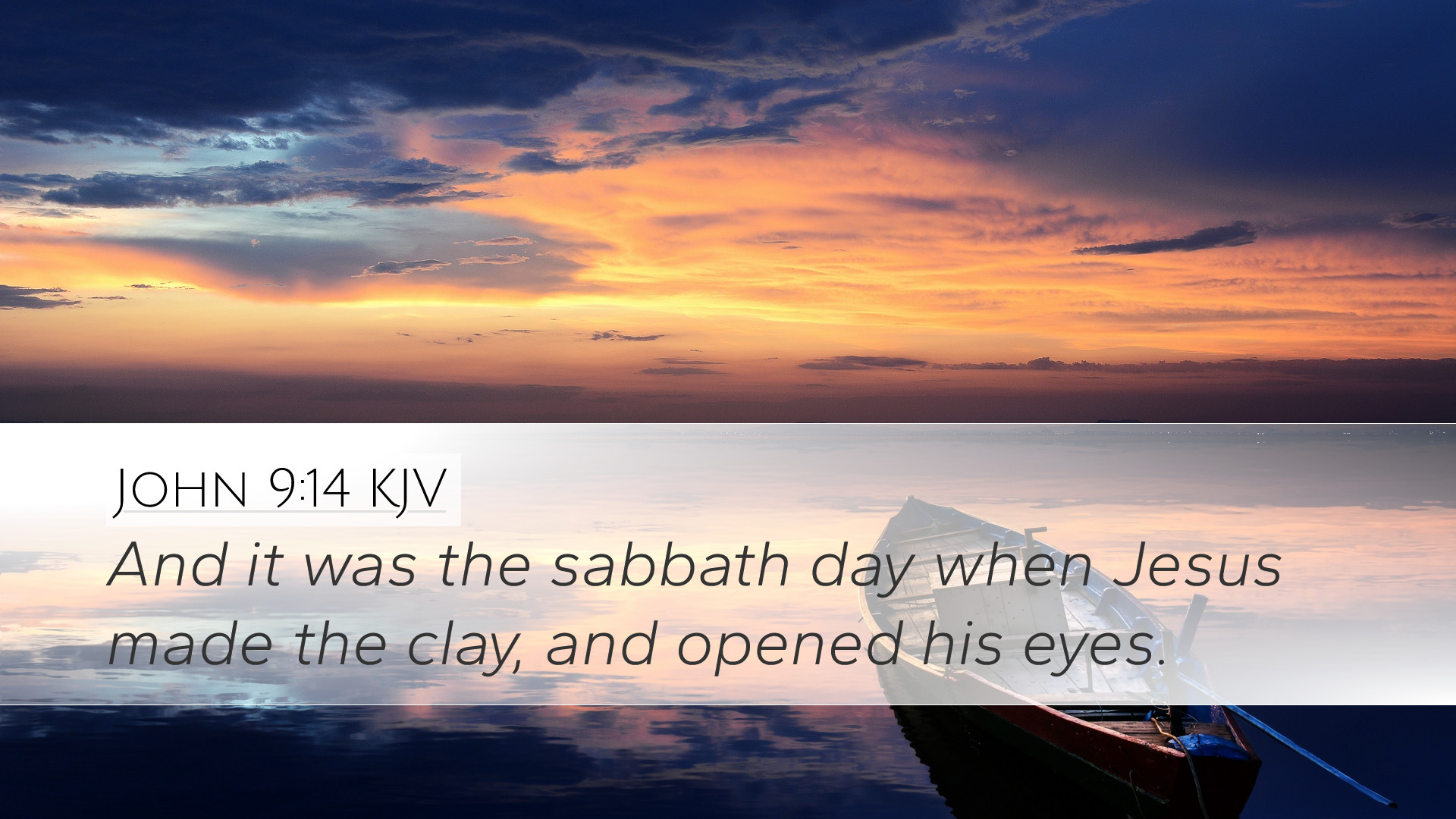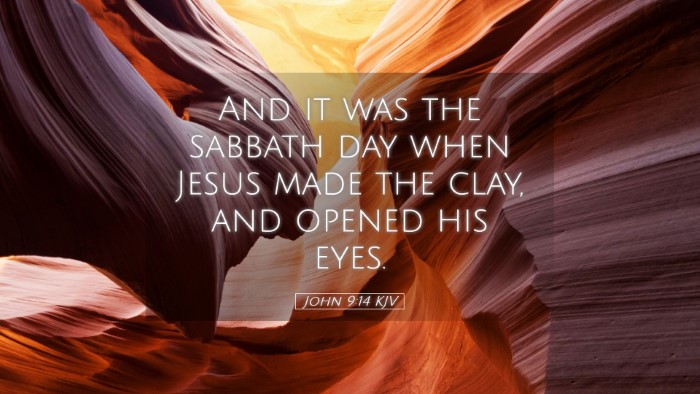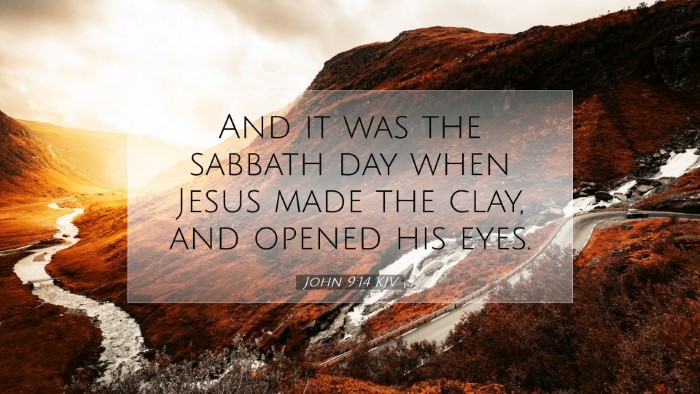Commentary on John 9:14
Verse Context: John 9:14 states: "And it was the sabbath day when Jesus made the clay, and opened his eyes." This verse marks a pivotal moment in the narrative of Jesus' healing of the blind man. The healing happens on the Sabbath, which is significant for both the Jewish leaders and the early Christian community.
Insights from Public Domain Commentaries
Matthew Henry's Commentary: Henry emphasizes the importance of understanding the broader context of Jesus' actions. He notes that the healing of the man born blind serves as a testament to Jesus' divine authority and compassion. By performing this miracle on the Sabbath, Jesus challenges the rigid interpretation of the law held by the Pharisees.
Henry states: "No work is to be done on the Sabbath, but acts of mercy are exceptions. The miracle not only showcases Jesus' power but also reveals the limitations of the Pharisaical law, which prioritizes tradition over compassion."
Albert Barnes' Notes: Barnes expounds on the implications of this event. He points out that the act of healing on the Sabbath was not merely a violation of Jewish law, but it also served to illustrate the true purpose of the Sabbath. As Barnes articulates, "The Sabbath was made for man, not man for the Sabbath; thus, any act that demonstrates mercy and healing is fully in the spirit of the law."
He also alludes to the significance of the clay used in the healing, suggesting that Jesus often employed physical elements to convey spiritual truths. The use of clay may symbolize humanity and the formation of new sight—both physical and spiritual. The man who receives sight represents all believers who might be spiritually blind but can now see through Christ’s intervention.
Adam Clarke's Commentary: Clarke offers a detailed exploration of the nature of the Sabbath in the Jewish tradition. He states: "The Pharisees had extended the law to the point where kindness and compassion were lost. They saw the healing as a violation, rather than an embodiment of God’s original intention for rest."
Clarke further elaborates on the blind man's experience, highlighting that the extraordinary nature of Jesus' act—performing a miracle on the Sabbath—represents a radical shift in understanding what it means to glorify God through rest. He notes the irony in the religious leaders' blindness to the miracle occurring right in front of them, indicating a broader spiritual blindness that can afflict even the most devout.
Theological Implications
- Healing and Wholeness: This miracle underscores a central theme of Jesus' ministry: restoration. The opening of the blind man's eyes signifies more than physical sight; it embodies a deeper spiritual awakening.
- The Nature of the Sabbath: The tension between Jesus and the religious authorities invites reflection on how modern believers understand the observance of Sabbath. Are we also interpreting the law too rigidly, potentially hindering acts of love and mercy?
- Jesus as Authority: By acting against societal norms, Jesus reestablishes the authority of God over human regulations. This indicates a significant theological shift where the heart of the law—love and mercy—supersedes mere rule-following.
- The Role of Faith: The blind man's acceptance of Jesus' healing illustrates a critical aspect of faith. His willingness to engage with Jesus' instructions reveals that faith often requires action and trust in the divine.
Practical Applications for Believers
For pastors, students, and theologians, John 9:14 presents several lessons:
- Embrace Mercy: Just as Jesus models compassion over conformity, believers are called to embody love in practical ways, especially on days of worship.
- Challenge Legalism: Engage with scriptural teachings that prioritize the spirit rather than the letter of the law, cultivating an environment where grace thrives.
- Foster Spiritual Sight: Encourage practices that help individuals see beyond the physical to the spiritual, nurturing an understanding of God’s transformative power.
- Promote Active Faith: Inspire congregations to act on their faith through service, and out of love, as exemplified by the healed blind man.
Conclusion
John 9:14 is more than a narrative about a miracle; it serves as a profound lesson on the nature of Jesus, the purpose of the Sabbath, and the call to embody mercy within the faith community. Through the insights of Matthew Henry, Albert Barnes, and Adam Clarke, we find rich theological reflections that encourage deeper engagement with the text, inviting all believers to consider how they might carry forth the message of Christ's healing and compassion in their lives today.


